Mortgage Refinance: Is Now a Good Time?
Mortgage rates are at historic lows right now as Treasury prices remain low and the Federal Reserve continues to prop up the economy with low interest rates. With rates poised to remain low amid an economic recovery from the coronavirus pandemic, many of homeowners are wondering if now is a good time for a mortgage refinance? Reducing the interest rate, adjusting the term, or changing the loan type on a mortgage can potentially save you tens of thousands of dollars over the lifetime of your loan. Yet, securing a new loan can be a tedious, costly, and potentially lengthy process, so it’s important to understand the options available to you, the refinancing process, and the associated costs before deciding if a mortgage refinance is a suitable option for you.
Refinancing Options
There are four primary mortgage refinance options available depending on your specific needs and current situation:
Rate and term refinance
FHA loan refinance
Cash-out refinance
HELOC refinance
A rate and term refinance is the most straightforward type of mortgage refinance and it provides an opportunity to lower the interest rate on your loan, change the loan type, or both. An example of changing the loan type could be moving from an adjustable rate mortgage to a fixed-rate mortgage and either increasing or decreasing the term of the loan (e.g, 15-year to 30-year).
FHA loan refinancing is only available to those with existing FHA-insured mortgages, but there are benefits to this type of refinance. For one, the process is much more streamlined than others.
Providing borrowers are already FHA-insured, not delinquent on their loan, don’t take out more than $500 in cash in the process, and there’s a “net tangible benefit”, this type of mortgage refinance can be done with minimal documentation and underwriting required by the lender.
A cash-out refinance allows borrowers to potentially lower the interest rate on their loan and keep only one mortgage loan while also cashing out some of the equity in their home.
The downside to this type of mortgage refinance is a larger loan amount and a prolonged loan amortization, but for borrowers with a lot of equity and a need to borrow a lot of cash (typically at least $50k or more), this is certainly a cheaper option (interest-rate-wise) than a personal loan.
To take advantage of the best rates for this type of refinance, it’s recommended that the loan not exceed more than a 60% balance-to-home value ratio along with a healthy credit score (typically above 740).
Lastly, a HELOC refinance is for borrowers that have a separate home equity line of credit (HELOC). HELOC’s work a lot like credit cards – they allow homeowners to borrow up to 85% of their home equity and then spend against it as they need or wish.
Most HELOC’s are variable rates and they have two phases: the draw period followed by the repayment period. During the draw period (typically 10 years) a HELOC owner can borrow from the credit line by checkbook or card and make usually interest-only minimum payments against the balance.
Once the draw period is over, the borrower enters the repayment period where they are no longer able to borrow against the credit line and must make monthly payments that include both principal and interest.
Since HELOC interest rates are typically variable, borrowers need to be careful of rising interest rate environments and the impact that can have on their cash flow (via rising payments) and the long-term cost of the loan.
Refinancing Process
Unfortunately, the mortgage refinance process can be rather cumbersome. The average refinance takes between 20 and 45 days, according to LendingTree, but there are plenty of different variables that can either speed up or slow down the process. Regardless, all refinances follow a similar process comprised of the following steps:
Determine the value of the home. Some lenders may require an appraisal for this step depending on the type of loan (e.g. cash-out refinance).
Research the different loan options and current interest rates.
Research any fees and additional costs.
Gather the required documentation. This will typically include a copy of a pay stub, at least two years of W-2’s and federal tax returns, at least two months of bank statements, a copy of the homeowners insurance policy, and a most recent mortgage statement.
Select a lender and apply for a loan. Fortunately, most lenders allow for online applications these days, making the refinancing process a bit more convenient (and safe!).
Receive a loan estimate. The lender will provide a loan estimate prior to processing that will list the total costs of the loan along with other details, such as the monthly payment and the amount of cash that will be needed at closing.
Loan processing. The lender will inspect and record all the documents submitted with the loan application.
Home appraisal. Most lenders (unless it’s a Fannie Mae or Freddie Mac loan) will require a home appraisal to be completed sometime before the loan goes into underwriting. Lenders do this to ensure accuracy in the current value of the home.
Underwriting. The lender will review all the paperwork involved in the refinance and make sure everything is in good order. It is common to receive questions or requests for additional information during this step.
Lock-in the interest rate. This ensures the rate won’t change before closing occurs. Technically, borrowers can lock in their interest rate at any step of the process, but some people may wait a bit if they expect interest rates to drop.
Sign documents and close on the loan. At this point borrowers will go into a title and escrow office or a notary public from the mortgage company, sign the final documents, and then wire or provide a cashier’s check for any required funds.
SCHEDULE A FREE 1-ON-1 CONSULTATION
Refinancing Costs
The costs associated with a mortgage refinance will vary – often drastically – between lenders and geographical markets, but fees typically range from 2%-5% of the outstanding principal on the mortgage. As a result, the most vital piece in this entire process is twofold: 1) Do your homework, and 2) Get familiar with the common fees involved.
Broadly speaking, you may see the following fees:
Early repayment fees. While not as common anymore, and even illegal in some states, some lenders still may charge an early repayment penalty if the loan is paid off within the first three to five years of a mortgage. Federally-backed mortgages, such as FHA and VA loans, generally are not allowed to include a prepayment penalty, but make sure you check your current loan to be sure. If you took your loan out in the past couple of years and there’s a repayment penalty if you refinance, you may want to reconsider.
Origination fees. Fees lenders will charge to cover the cost of processing the loan and performing a hard credit pull. Origination fees are typically open for negotiation, so don’t shy away from discussing them with your lender.
Appraisal and inspection fees. These fees are typically only applicable for cash-out refinances and new purchases, but it depends on the lender and your current situation.
Mortgage and title insurance fees. FHA and VA loans require mortgage insurance for all loans as protection against default. Additionally, if you have less than 20% equity in your home, you’ll be required to pay for private mortgage insurance. Lastly, you’ll need to purchase lender’s title insurance which protects the lender from any errors that might be found searching courthouse records to verify ownership of your home and land.
Discount points. Points are effectively interest payments that you can prepay to lower your mortgage’s long-term interest rate. If you plan to stay in your home a long time, buying discount points on your mortgage may be advantageous, but make sure you do the math since they do alter the break-even period for your refinance.
*NOTE: With most refinances, you can wrap a lot of your closing costs up into the loan balance to minimize your out-of-pocket costs.
SCHEDULE A FREE 1-ON-1 CONSULTATION
The Bottom Line
While interest rates are low and the opportunity exists to potentially save a lot of money on your mortgage, it does not immediately signify it’s time for a mortgage refinance. Rather, it’s important that you do your homework first. Research your mortgage refinance options, get familiar with the process, and be prepared for all of the associated costs.
In general, if the cost savings on the mortgage refinance outweigh the fees and hassle of doing so, then it could certainly make sense, but every person’s situation is unique. Finally, for those of you who have borrowed within the past few months, most lenders won’t allow a mortgage refinance within 6 months of issuance, so you’ll need to wait until you are past that mark first.
If you are still unsure about whether a mortgage refinance makes sense for you, our team of financial planning experts has the tools and knowledge to help you achieve the clarity you seek. Schedule a time to chat with us today to see how we can help!
Securities and Advisory Services offered through Calton & Associates, Inc., Member FINRA/SIPC. OSJ: 2701 N. Rocky Point Drive, Suite 1000, Tampa, FL 33607 (813) 264-0440. Forefront Wealth Partners and Calton & Associates, Inc. are separate entities.
Calton & Associates, Inc. does not provide legal or tax advice.





